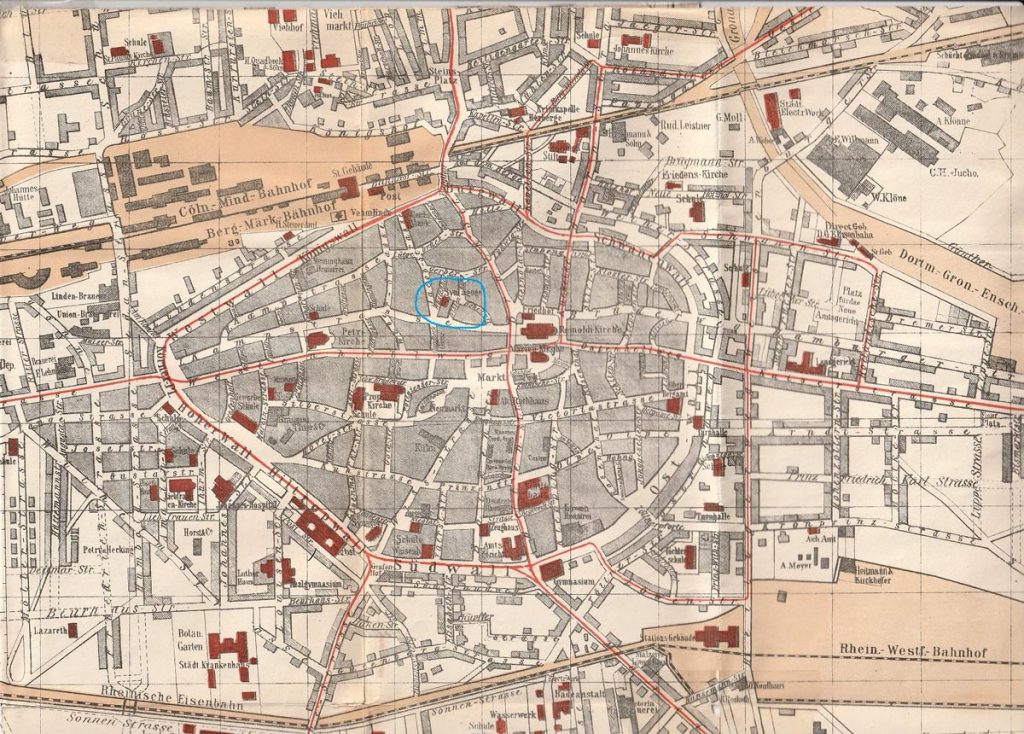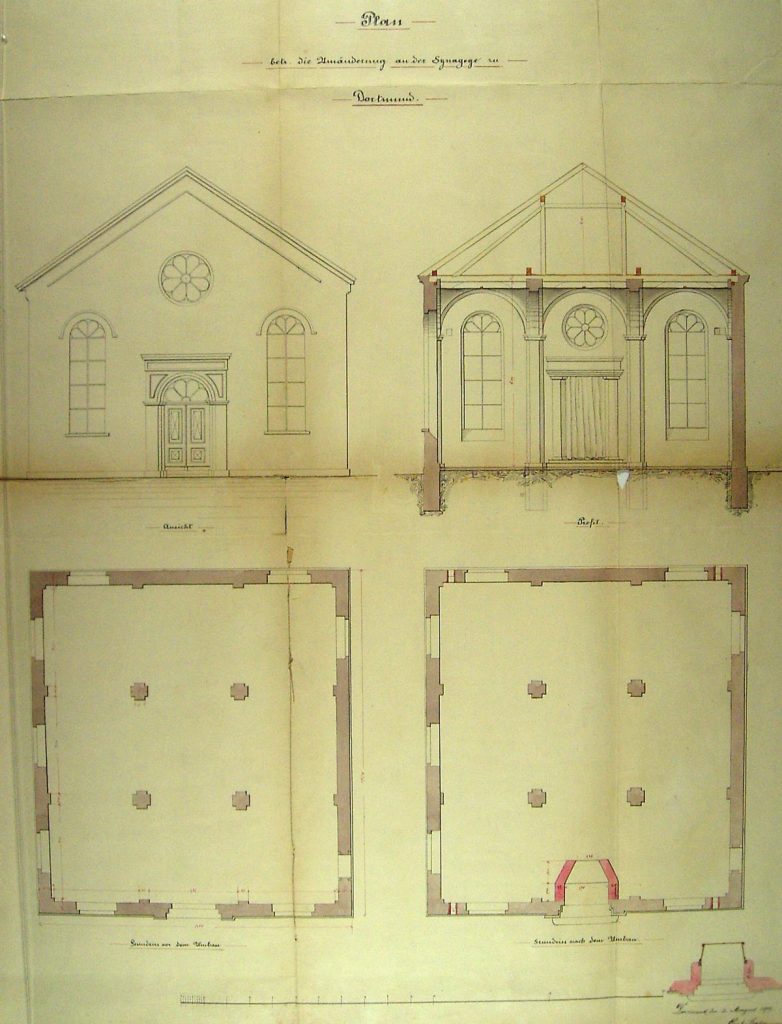A new synagogue for the growing community
The word “synagogue” comes from the Ancient Greek and means “assembly”. It was used in antiquity initially as a general term for Jewish religious gatherings, and was then transferred instead to the building where these were held. Synagogues are places not just for religious worship, but also for learning and in particulat for study of the scriptures. In their architecture, they frequently follow the styles prevailing in their local neighbourhood.
The first synagogue to be built in Dortmund in modern times was completed and consecrated in 1853. It was located in “Am Wüstenhof”, a short street or lane to the north of Kampstrasse, between the present-day Hansastrasse and Bissenkamp, and matched the surrounding buildings in both height and style. In that year there were around people of 250 Jewish faith living in the city, i.e. three times more than 20 years previously, and the synagogue now formed the focal point of their community.
In the following four decades, however, the Jewish population of Dortmund grew so strongly that a new, bigger synagogue became essential. In summer 1900, the holy objects were transferred from the old, small synagogue to the magnificent new synagogue on Hiltropwall.


